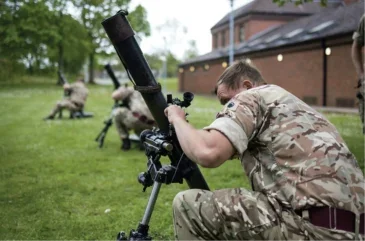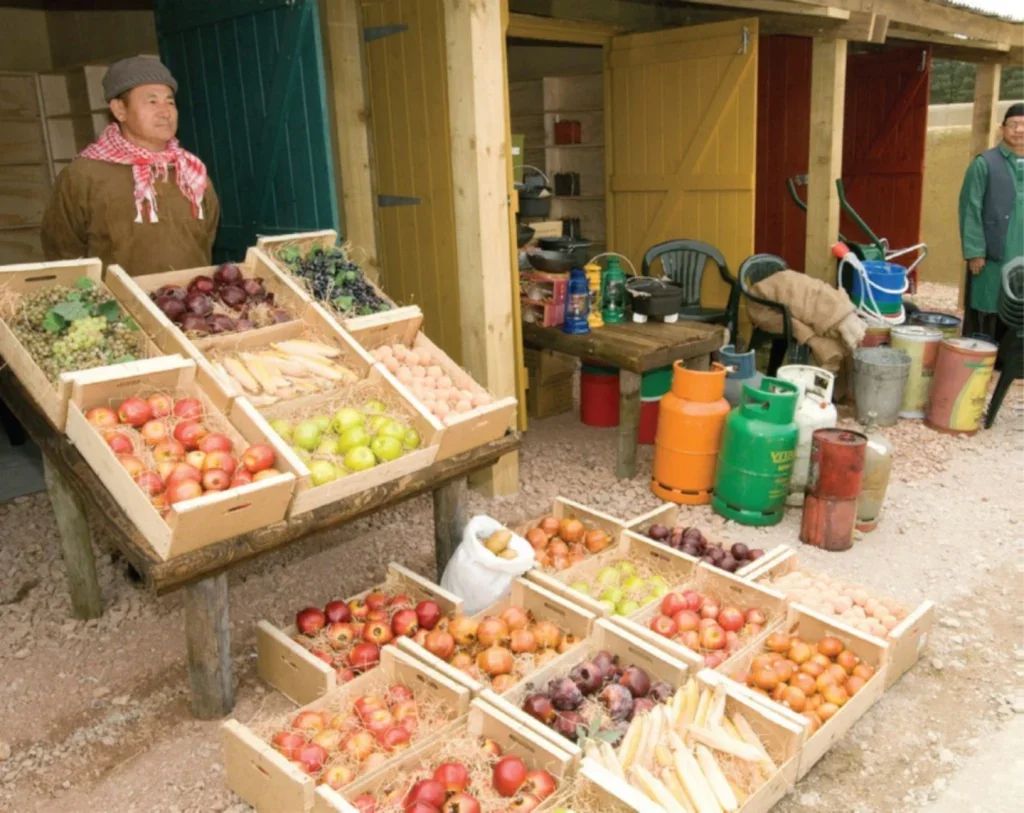
In 2015, I toured the International Defence Industry Fair on a particularly humid May in Istanbul. Aside from the usual displays of arms and armour – a thronging crowd pushed to get a look inside the prototype of the Altay main battle tank – the Training and Simulation exhibition was causing a hubbub too. There, I joined some soldiers in a friendly pistol shooting contest set up on a virtual gun range, complete with weapons that simulated the recoil of real firearms. While they may have had the live firing experience, I grew up playing Time Crisis with a light gun on the PlayStation. And though we certainly all had fun, the fact I was able to do so well against trained soldiers told me that this definitely wasn’t realistic enough – and warfighting was very much a soberingly realistic endeavour.
But, aside from these less-than-realistic virtual ranges, there are a wide variety of simulation experiences that run the gamut of tactical to strategic level training. These include fictional villages recreated like a movie set, to highly advanced and physically expansive facilities that simulate a broad range of scenarios – all without the logistical challenges of deploying actual physical assets. With today’s militaries expected to fight everything from conventional pitched battles to low-intensity insurgencies, meanwhile, it’s easy to see why army training corps would be interested in simulations that can better prepare its officers and soldiers for combat.
The CATT is out of the bag
Computer simulations may be a recent phenomenon, but using games and simulations goes back centuries. One of the more famous examples from the 19th century is Kriegsspiel, literally translated to ‘wargame’ from its native German. The Prussian army used Kriegsspiel as part of their curriculum to teach battlefield tactics and operations to their officer corps. Though the game involved a map and different coloured blocks – representing various military units with their own attributes, and an umpire governing the rules and managing hidden information – its effects were noticeably rooted in the real world. No wonder Prussia soon became renowned for producing officers with fine command instincts and calm decision-making in the heat of battle, attracting the attention of her rivals who sought to emulate her successes. As such, Kriegsspiel was adopted by other major European powers, especially after Prussia smashed France in 1870 and proclaimed the German Empire.
We’ve certainly come a long way from paper maps and coloured blocks. Now, soldiers can immerse themselves in digitally recreated environments that simulate operating vehicles and commanding large formations of soldiers over great expanses of land, complete with an enemy to fight and a battle to win. And while there are many platforms that exist around the world – as I experienced first-hand in Istanbul – perhaps nothing quite embodies the potential of simulations like the UK Ministry of Defence’s (MoD) partnership with US defence contractor Lockheed Martin, and their Combined Arms Tactical Trainer (CATT) facilities.
As armoured warfare has increased in lethality and intensity, it is ever more necessary for soldiers to be able to train and rehearse for varying threat scenarios. CATT, which is based at the Land Warfare Centre at Warminster in Wiltshire, and in Sennelager in Germany, can accommodate combined arms training for ground, air and logistics missions at the company, battle group and brigade levels. The system, which is critical to preparing the British Army for operations, was commissioned by the MoD’s Defence Equipment and Support (DE&S) in 2002, and in the following two decades has trained over 125,000 soldiers. Altogether, CATT can offer more than 15,000 training days per year – an impressive figure when one considers the time and resource constraints militaries face to get their troops up to combat readiness standard.
13million
The amount of gallons of fuel saved as a result of CATT training.
UK MoD
Far from being static, meanwhile, CATT has been able to change with the times and even expand. “It’s hard to believe that CATT has been in service for 20 years and yet is just as important and relevant to army training today as it was on day one,” said Nick Taylor, head of soldier training and specialist projects at DE&S during CATT’s 20th anniversary celebrations. “When it went into service, CATT was designed to provide battle group training in line with the cold war set-up of forces in Europe. As the nature of conflict changed to operations in Iraq and Afghanistan, so CATT changed – growing to become a key part of the mission specific training for operations Telic and Herrick.”

Two years on, and CATT is as important as ever. Each site covers an area the size of three football pitches and consists of more than 200 networked simulators, all linked to create a combat area of over 10,000km2 – an area larger than North Yorkshire. It can accommodate over 400 warfighters, alongside artillery, air and aviation training. Being an almost entirely digital space, meanwhile, soldiers have fired more than 14 million rounds of virtual ammunition, saving the taxpayer an astonishing £3bn in bullet costs alone. CATT also enables the use of simulated armoured vehicles in realistic cockpits, translating to more than six million miles of digitally traversed terrain at a saving of approximately 13 million gallons of fuel. This equally has an environmental impact, shaving off an impressive 147 million kilograms of CO2 emissions from the MoD’s sustainability targets. With numbers such as these – and more than 4,000 exercises having been undertaken over almost a quarter of a century – it’s no surprise that the British military establishment is enthusiastic about CATT, which can drive down costs while maintaining a keen cutting-edge.
4,000+
The number of exercises conducted since CATT was inaugurated.
Bridging reality with the virtual world
Yet beyond the benefits of systems like CATT, can these advanced technologies replace more traditional training methods? There’s some evidence they can. After all, simulations now incorporate AI, augmented reality (AR) and machine learning to create training scenarios that would be impossible to do outside of dealing with the randomness of an active war zone, even down to manipulating freak weather conditions, sandstorms and the like.
£3bn+
The amount the MoD has saved on ammunition costs alone due to CATT.
UK MoD
Not that soldiers can simply replace real-world training altogether. While, after all, there can be no doubt that simulative experiences have significant advantages, they equally can’t replace the experiential wisdom of veteran soldiers and trainers who have been there and done that. This is hardly surprising: there is, in the end, a world of difference between traversing and fighting across all manner of virtual terrains from the comfort of an office chair and computer monitor, to slogging it out across the Brecon Beacons in wet conditions with a fell wind at your back that cuts straight to the bone. There is, moreover, something about being in a computer that is stultifying, and can risk removing the feeling of actually being on the ground with a soldier’s unit and working in difficult conditions in the real world.
This reality has been recognised in academic papers studying the efficacy of simulations in producing soldiers who possess combat readiness. “While vigorously promoting simulation training, the US military also pays great attention to the practical test function of actual training,” is how a 2021 paper by Kai Yao and Shaoluo Huang put it. “Combining simulation training with actual training can integrate their strengths, avoid their weaknesses and really play the role of simulation training multiplier.” In other words, it’s never good enough to sit in comfortable simulated environments, and soldiers need to also be accustomed to getting down-and-dirty in the field to be more complete warfighters.
While digital simulations offer numerous benefits – such as cost-effectiveness, safety and the ability to repeatedly practise complex scenarios – they therefore clearly don’t fully replace the need for live field exercises. The physical and psychological experiences of actual manoeuvres, the unpredictability of real environments and the hands-on learning that occurs in the field are irreplaceable, even if they are significantly more expensive to run. While modern militaries such as those fielded by Nato forces therefore increasingly rely on digital simulations to enhance training – they equally continue to maintain a robust schedule of live exercises to ensure their forces are fully prepared for the complexities of modern warfare. The future likely promises a more integrated approach, where digital and live simulations complement each other, each addressing the limitations of the other, and ultimately providing nations with forces that are better equipped to support their interests.



